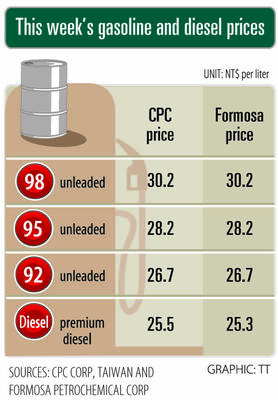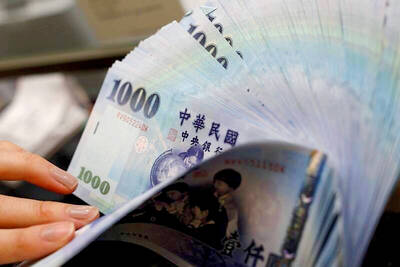Tesla Inc is losing key personnel as it races to bring the Model 3 — its most critical electric sedan yet — to market later this year.
Tesla chief financial officer Jason Wheeler’s impending departure, announced just 15 months after he joined Tesla from Google, is to be the latest in a raft of largely under-the-radar exits.
Former executives, who spoke on the condition they not be identified, cited a range of reasons for their exits over the past year, including long hours in the rush to high-volume production, mission creep and a tense culture that reflects their visionary, but indefatigable chief executive officer Elon Musk.
“Tesla looks like a company that is getting stretched to the limit,” said Dave Sullivan, an analyst at industry researcher AutoPacific Inc. “The pressure of getting out the Model 3 is getting to everybody, from the people on the factory floor to the people at the top.”
A Tesla spokesman in an e-mailed statement called attracting and retaining talent “one of our biggest assets” and said the company’s attrition rate was below average among technology companies.
Long hours and job-hopping are routine at tech companies in California’s Silicon Valley and Palo Alto-based Tesla continues to make high-profile hires.
Even so, analysts have flagged the departures as a risk to what is to be Tesla’s most challenging execution year in its short history.
Musk plans to introduce the Model 3, which is starting battery production at the Gigafactory and is to integrate SolarCity, a recent acquisition.
Like many companies, Tesla noted among risk factors in its just-filed annual report that it needs to attract and retain skilled workers.
However, this year it added a new phrase to the boilerplate, saying the efforts are needed “especially to support our expansion plans and ramp to high-volume manufacture of vehicles.”
Wheeler, whose departure was first announced on last week’s quarterly earnings call, said he wants to pursue work in public policy and praised what he called the “A-team” at Tesla.
Deepak Ahuja, the chief financial officer who led Tesla from the brink of bankruptcy through its 2010 initial public offering and retired in 2015, is to return next month for a second tour of duty.
Bloomberg News compiled a list of more than two dozen management departures over the past year that include vice presidents of finance, communications, regulatory affairs, production, manufacturing, products and programs.
Tesla lost Mark Lipscomb, vice president of human resources and Satish Jeyachandran, its director of hardware engineering.
Tesla is generally opaque about its leadership beyond Musk and chief technical officer J.B. Straubel, with no list of executives or vice presidents on its Web site, its investor relations page or in the annual report the company filed this week with the US Securities and Exchange Commission.
Among Tesla’s senior leadership team, three quarters have more than three years of tenure, 60 percent have been with the company at least six years and 20 percent have worked there a decade, according to the spokesman.
About 60 percent of those who have had a leadership position at Tesla over its 14-year existence are still with the company, Tesla said.
None of the former managers Bloomberg News reached agreed to speak on the record.
When Tesla announced in January that it hired Chris Lattner from Apple Inc as vice president of Autopilot software, it did not mention that Sterling Anderson, the executive who ran the entire Autopilot program and reported directly to Musk, departed in December last year.
Tesla then sued Anderson, alleging he broke his confidentiality agreement with the company.
Aurora Innovation LLC, the company Anderson started with the former head of Google’s self-driving project, said it would fight the “meritless” lawsuit.
Several former Tesla employees have landed at other auto companies, including Future Mobility Corp, Nio and Waymo, the self-driving car business spun off by Google parent Alphabet Inc.
To be sure, Tesla’s clean-energy mission and compelling products has attracted high-caliber people, regardless of its hard-driving reputation. The 45-year-old Musk has described himself as a “nano manager,” has kept a sleeping bag at the company’s car factory and works a second job running a rocket company.
As of Dec. 31, last year, Tesla had about 17,800 employees, not counting another 12,200 added with the US$2 billion acquisition of SolarCity last year. Despite the growing headcount, more than 2,000 job postings at Tesla are listed on the recruiting Web site Taleo.
Tesla’s shares have jumped about 29 percent over the past year and closed at US$251.57 on Friday.
Revenue surged 73 percent to more than US$7 billion last year. The company produced almost 84,000 vehicles last year and plans to make half a million next year, then 1 million in 2020. It expects to pick locations for more gigafactories by the end of this year, and to introduce a semi truck and bus.
One worker at Tesla’s Fremont, California, auto plant touched off a unionization effort last month, publishing a Medium post describing 60 to 70-hour workweeks, safety-related issues and mandatory overtime.
The unionization talk has drawn pushback from Musk.
He promised employees free frozen yogurt stands, an electric pod-car roller coaster connecting parking lots to the factory and a “really amazing party once Model 3 reaches volume production later this year,” according to an internal e-mail Buzzfeed obtained last month.
Musk’s moves to lighten the environment show the union threat has registered, Sullivan said. “If Tesla has more than 2,000 job openings, does that mean that people are overloaded, or doubling up? You can’t constantly ask for the impossible.”

Merida Industry Co (美利達) has seen signs of recovery in the US and European markets this year, as customers are gradually depleting their inventories, the bicycle maker told shareholders yesterday. Given robust growth in new orders at its Taiwanese factory, coupled with its subsidiaries’ improving performance, Merida said it remains confident about the bicycle market’s prospects and expects steady growth in its core business this year. CAUTION ON CHINA However, the company must handle the Chinese market with great caution, as sales of road bikes there have declined significantly, affecting its revenue and profitability, Merida said in a statement, adding that it would

i Gasoline and diesel prices at fuel stations are this week to rise NT$0.1 per liter, as tensions in the Middle East pushed crude oil prices higher last week, CPC Corp, Taiwan (台灣中油) and Formosa Petrochemical Corp (台塑石化) said yesterday. International crude oil prices last week rose for the third consecutive week due to an escalating conflict between Israel and Iran, as the market is concerned that the situation in the Middle East might affect crude oil supply, CPC and Formosa said in separate statements. Front-month Brent crude oil futures — the international oil benchmark — rose 3.75 percent to settle at US$77.01

RISING: Strong exports, and life insurance companies’ efforts to manage currency risks indicates the NT dollar would eventually pass the 29 level, an expert said The New Taiwan dollar yesterday rallied to its strongest in three years amid inflows to the nation’s stock market and broad-based weakness in the US dollar. Exporter sales of the US currency and a repatriation of funds from local asset managers also played a role, said two traders, who asked not to be identified as they were not authorized to speak publicly. State-owned banks were seen buying the greenback yesterday, but only at a moderate scale, the traders said. The local currency gained 0.77 percent, outperforming almost all of its Asian peers, to close at NT$29.165 per US dollar in Taipei trading yesterday. The

RECORD LOW: Global firms’ increased inventories, tariff disputes not yet impacting Taiwan and new graduates not yet entering the market contributed to the decrease Taiwan’s unemployment rate last month dropped to 3.3 percent, the lowest for the month in 25 years, as strong exports and resilient domestic demand boosted hiring across various sectors, the Directorate-General of Budget, Accounting and Statistics (DGBAS) said yesterday. After seasonal adjustments, the jobless rate eased to 3.34 percent, the best performance in 24 years, suggesting a stable labor market, although a mild increase is expected with the graduation season from this month through August, the statistics agency said. “Potential shocks from tariff disputes between the US and China have yet to affect Taiwan’s job market,” Census Department Deputy Director Tan Wen-ling